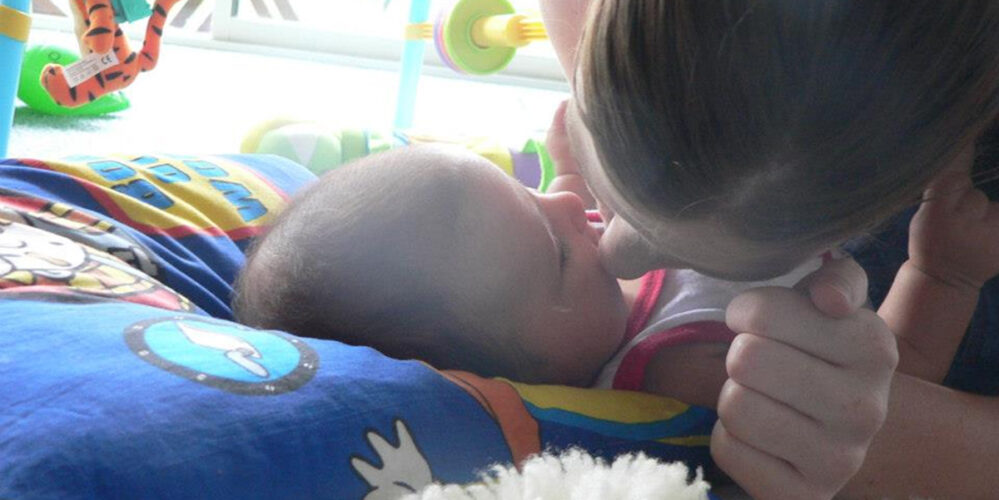Connecting and Communicating with Your Baby

Building the Foundation for Lifelong Bonding
From the moment your baby is born, they’re working hard to connect with you. Even without words, they communicate through eye contact, facial expressions, movements, and sounds. Tuning in to these early signals helps you understand your baby’s needs, fosters a secure attachment, and lays the groundwork for healthy emotional and social development. Children don’t come with a manual, we as parents have got to figure out how we can connect with our babies. You can do this by taking the time to observe and figure out what is important, then tune into your babies own temperament and communication efforts. This will allow you to respond to baby in the way that is best for them.
“If you learn to recognize the child’s needs, you will be able to respond to him, and he will feel secure and respected.”
– Dr. Emmi Pikler
Why Early Communication Matters
Responsive, consistent communication builds trust. When you respond to your baby’s cries, coos, or cues with care and attentiveness, they learn that the world is safe and that their needs will be met. This trust not only strengthens your bond but also supports brain development, emotional regulation, and language skills. Even though a young baby is unable to reciprocate spoken language, it is still a great idea to talk to your baby when you are playing with, holding or feeding them. When you engage in this with your baby, it gives you extra opportunities to connect, communicate, watch, and observe reciprocated non-verbal communication which helps you to better understand their cues.
Understanding Baby Cues
Babies have their own language. A turned head, arching back, or avoiding eye contact may indicate overstimulation. Clenched fists, sucking movements, or fussing can be signs of hunger, tiredness or discomfort. On the other hand, wide eyes, smiles, and cooing usually signal interest and contentment. Learning to recognize these cues helps you respond in ways that soothe, stimulate, or comfort your baby as needed.
Some other cues you can expect to see from your baby when they are content or interested also are a bright face and wide eyed bub, they might spend time reaching towards you with their hands, giggling or kicking their legs around together at the same time as moving their arms at the same time. Equally if they are disinterested, need a break or require a change in approach, you could see a baby frowning, squirming or making jerky quick type movements with either their arms or legs.
Temperament and Individual Differences
Just like adults, babies are born with distinct temperaments. Some are easygoing, while others may be more sensitive or cautious. Understanding your baby’s temperament can help you adapt your responses. A sensitive baby may need more quiet time and gentle transitions, while an active baby may crave more stimulation and play. Look for your babies temperament, you will discover if he/she likes to be held and cuddled, or if they like to be free to move their body and what that body movement might be telling you about them. Is it a happy movement or an unhappy style of movement? The way a baby communicates, responds to the world and express themselves is influenced by their temperament.
Baby Sign Language: A Helpful Tool
Introducing baby sign language can be a wonderful way to enhance communication before your baby can speak. Simple signs like “milk,” “more,” “all done,” and “tired” can reduce frustration for both of you and empower your baby to express needs clearly. Starting around 6 months, babies can begin to mimic simple gestures—and often use them before they can form words. It’s not about replacing speech but reinforcing it and deepening your connection.
What’s Typical—and When to Seek Support
Some fussiness, irregular sleep, and periods of crying are completely normal. However, if your baby is consistently difficult to soothe, rarely makes eye contact, or seems disengaged from interaction, it’s worth discussing with your Plunket or Well Child provider or GP.
Final Thoughts
A lot can be said for a babies facial expressions, however getting playful, talking, signing, singing, and responding to your baby’s cues helps build a strong emotional bond and supports healthy development and communication skills. These small moments of connection add up, creating a rich, secure foundation that lasts a lifetime.